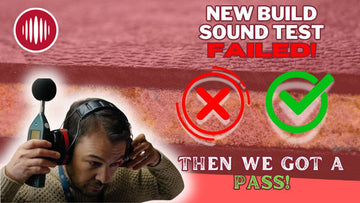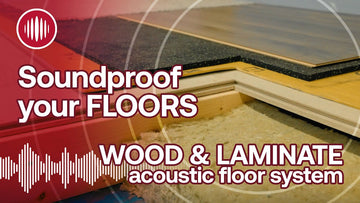Case Study: Sound Test Failure and Retest After Treatment

Project Overview: Peninsular Acoustics were commissioned to conduct pre-completion sound insulation testing for a newly constructed small block consisting of two flats. The flats were arranged with one on the ground floor and the other on the first floor. Both airborne and impact sound tests were conducted. Unfortunately, one of the airborne tests failed. Given that the flats were already completed and sold, our client urgently needed a solution.
Existing Floor Construction:
- Carpet with underlay
- 18mm chipboard
- Foam on top of timber joists
- Timber joists approximately 200mm deep with 100mm mineral wool insulation between
- Double layer of 15mm Soundbloc plasterboard fixed to resilient bars
Initial Test Results: The airborne test resulted in a 41dB Dntw + Ctr (48dB Dntw, -7Ctr). The structure exhibited general weakness across the frequency range, particularly in the low frequencies, likely due to the combination of a timber floor and surrounding blockwork walls (exact details unknown).
Proposed Solution: The client was advised that improvements might involve ceiling work and potentially adding a lining to the blockwork walls. However, a less invasive option was to add mass above the separating floor, which could enhance the test results, especially in the low-frequency range, potentially meeting the required regulations. The client opted for this approach.

Implementation: Approximately 30Kg/m² of mass was added to the separating floor using an 18mm cement particle board and Acoustilay 15, sourced from the Sound Insulation Store and manufactured by Sound Reduction Systems Limited.

Outcome: The test results improved from 41dB Dntw + Ctr to 46dB Dntw + Ctr. This 5dB improvement brought the airborne test into compliance with the performance standards of Building Regulations Document E 2003, which requires a minimum of 45dB Dntw + Ctr. The graphical representation of the test results showed significant improvement in the low-frequency range, with minimal changes above 250Hz.






